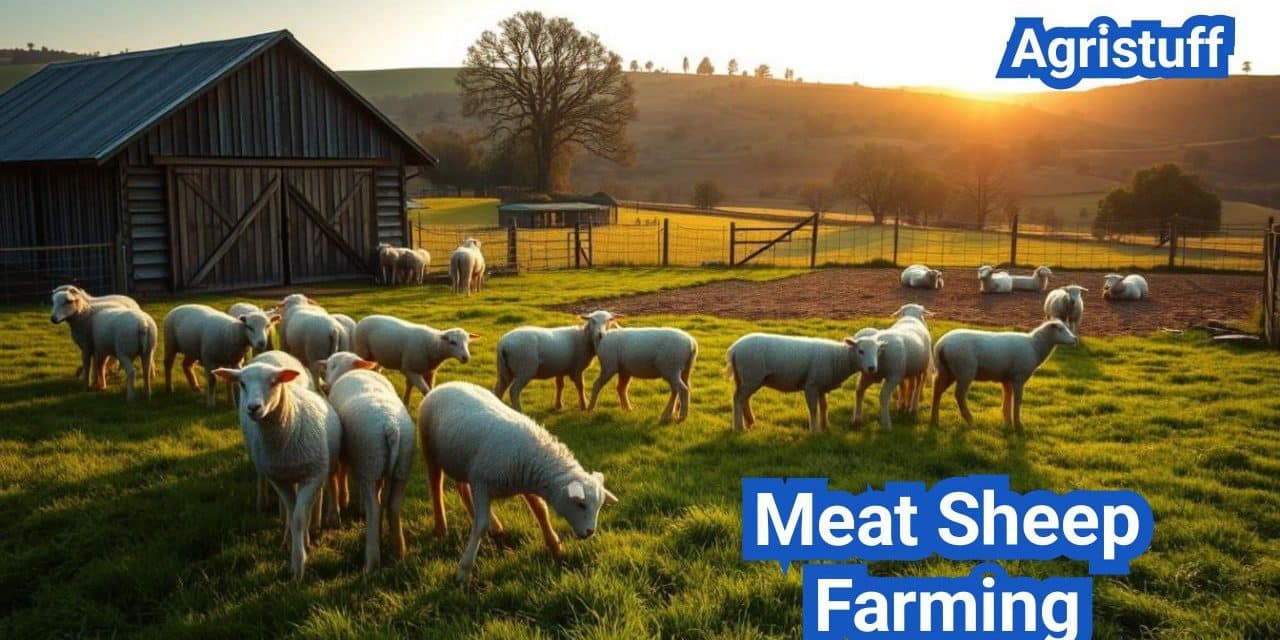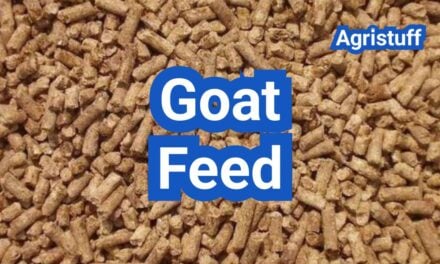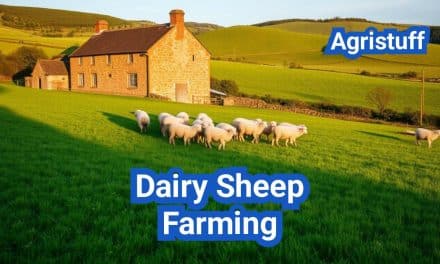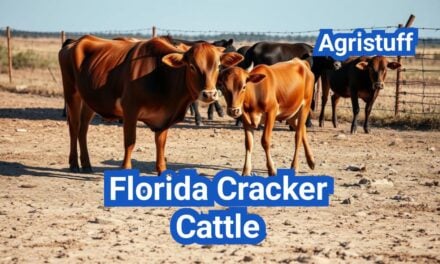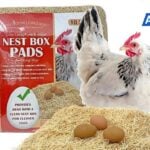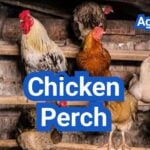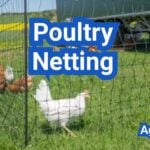Embarking on a Meat sheep farming journey can be both exciting and rewarding, offering the potential for long-term financial gains and sustainable farming practices. For those new to this venture, understanding the basics is crucial. Lamb meat farming, a subset of sheep farming, involves raising sheep specifically for their meat, which is a popular practice globally.
So, how does sheep farming work? It involves selecting the right breed, managing their care, and marketing the products. Beginners can start by learning about the different aspects of sheep farming, including breed selection, nutrition, health management, and marketing strategies. This comprehensive guide is designed to walk you through these essential aspects, providing a solid foundation for your sheep farming journey.
Key Takeaways
- Understanding the basics of sheep farming is crucial for beginners.
- Lamb meat farming is a profitable subset of sheep farming.
- Selecting the right breed is a key aspect of successful sheep farming.
- Effective care and management are vital for the health and productivity of sheep.
- A well-planned marketing strategy is essential for selling sheep products.
Understanding the Basics of Meat Sheep Farming
The basics of meat sheep farming encompass a range of practices and knowledge essential for successful sheep production. Sheep farming is a significant aspect of agriculture, providing meat, wool, and other products. To understand the intricacies of meat sheep farming, it’s crucial to start with the fundamentals.
What Is Sheep Farming?
Sheep farming involves raising sheep for various purposes, including meat, milk, wool, or skins. Meat sheep farming specifically focuses on breeding and raising sheep for meat consumption. This type of farming requires careful management of the flock, including nutrition, health care, and breeding practices.
“Sheep farming is not just about raising animals; it’s about managing a complex ecosystem that includes the land, the animals, and the farmer’s knowledge and skills,” as noted by agricultural experts. Effective sheep farming practices contribute to sustainable agriculture and provide a source of income for farmers.
The Sheep Industry in the United States
The sheep industry in the United States is a vital part of the country’s agricultural economy. According to the USDA, sheep farming contributes significantly to the production of meat and wool. The industry is diverse, with farms ranging from small, family-owned operations to large, commercial enterprises.
The demand for lamb and other sheep products drives the industry, with consumers increasingly seeking grass-fed and sustainably produced meat. This trend has led to the growth of niche markets for specialty lamb products.
Differences Between Lamb, Mutton, and Wool Production
Lamb, mutton, and wool are the primary products of sheep farming. Lamb refers to the meat from sheep less than one year old, known for its tender flavor. Mutton, on the other hand, is the meat from older sheep, often characterized by a stronger flavor. Wool production involves breeding sheep for their fleece, which is then harvested and processed into various textile products.
- Lamb production focuses on raising young sheep for meat.
- Mutton production involves older sheep, often used for processed meats.
- Wool production is centered on sheep breeds known for their high-quality fleece.
Understanding these differences is crucial for farmers to decide which products to focus on, based on market demand and their farm’s capabilities.
Benefits of Starting a Meat Sheep Operation

Meat sheep farming offers numerous benefits, including economic advantages and effective land management. By diversifying your agricultural activities with sheep, you can create a more resilient and profitable farming operation.
Economic Advantages of Raising Sheep
Raising sheep for meat can provide significant economic benefits. Sheep farming can be a profitable venture due to the relatively low startup costs compared to other livestock operations. Some of the key economic advantages include:
- Diversified income streams through the sale of lambs, wool, and breeding stock
- Potential for value-added products such as grass-fed lamb
- Opportunities for direct marketing to consumers
- Utilization of family labor, which can help reduce costs
Land Management Benefits Of Meat Sheep Farming
Sheep are excellent land managers, capable of maintaining and improving pasture health through their grazing activities. Some of the land management benefits of sheep farming include:
- Control of weeds and brush through targeted grazing
- Improved soil fertility through manure deposition
- Enhanced biodiversity by maintaining open spaces and diverse vegetation
- Potential for integrating sheep with other farm enterprises, such as cattle or crops
Versatility of Sheep Enterprises
Sheep enterprises offer a high degree of versatility, allowing farmers to adapt to changing market conditions and personal preferences. This versatility is evident in several areas:
- Flexibility in production systems, from small-scale to large commercial operations
- Opportunities for niche marketing, such as organic or specialty breeds
- Potential for integrating sheep with other agricultural activities, enhancing overall farm diversity
By understanding these benefits, farmers can make informed decisions about incorporating meat sheep into their agricultural operations, potentially leading to a more sustainable and profitable farming system.
Getting Started with Meat Sheep Farming
Embarking on a meat sheep farming journey requires careful planning and a thorough understanding of the initial steps involved. For beginners, it’s essential to grasp the fundamental aspects that will set the stage for a successful operation.
Land Requirements and Considerations Of Meat Sheep Farming
The first step in starting a meat sheep farm is assessing your land. Sheep require adequate pasture for grazing, and the quality of the land directly impacts the health and productivity of your flock. When evaluating your land, consider factors such as soil type, drainage, and the availability of natural forage.
Adequate fencing is also crucial to keep your sheep safe and contained. The type and quality of fencing can vary depending on the terrain and the presence of predators in your area.
Initial Investment and Equipment Needs Of Meat Sheep Farming
The initial investment for a meat sheep operation includes purchasing the sheep themselves, fencing, shelter, and equipment for handling and feeding. The cost can vary widely depending on the scale of your operation and the breed of sheep you choose.
Essential equipment includes feeding troughs, waterers, and handling facilities. Investing in durable, high-quality equipment can reduce long-term costs and improve efficiency.
- Sheep
- Fencing materials
- Shelter or barn
- Feeding and watering equipment
- Handling facilities
Legal Requirements and Regulations Of Meat Sheep Farming
Before starting your meat sheep farm, it’s crucial to familiarize yourself with local, state, and federal regulations. This includes zoning laws, environmental regulations, and health standards for livestock.
Record-keeping is also an essential legal requirement. Accurate records of breeding, lambing, feeding, and health issues are vital for managing your flock effectively and complying with regulatory requirements.
By understanding and complying with these legal requirements, you can avoid potential issues and ensure the long-term viability of your meat sheep operation.
Selecting the Right Meat Sheep Breeds

Choosing the right breed is crucial for a successful meat sheep farming operation. The breed selected can significantly impact the efficiency, productivity, and profitability of the farm.
Popular American Meat Breeds
Several breeds are popular among American farmers for meat production due to their desirable characteristics. The Suffolk breed, known for its fast growth rate and muscular build, is a favorite. Another popular choice is the Hampshire breed, which is recognized for its high-quality meat and hardiness.
Other notable breeds include the Dorset, which is valued for its ability to lamb throughout the year, and the Southdown, known for its fine wool and high-quality meat.
Heritage and Specialty Meat Breeds
Heritage breeds, such as the Katahdin, offer unique characteristics that can be beneficial for specific farming conditions. The Katahdin is known for its parasite resistance and is a good choice for farmers looking for a low-maintenance breed.
Specialty breeds like the Cheviot are also gaining popularity for their hardiness and the quality of their meat.
Dual-Purpose Breeds for Meat and Wool
For farmers interested in producing both meat and wool, dual-purpose breeds are an excellent option. The Columbia breed is a prime example, offering a balance between meat production and wool quality.
Another dual-purpose breed is the Corriedale, known for its versatility and the high quality of both its meat and wool.
By understanding the different types of meat sheep breeds available, farmers can make informed decisions that best suit their operation’s needs and goals.
Essential Infrastructure for Sheep Farming
Adequate infrastructure is the backbone of any sheep farming enterprise, ensuring the well-being of the animals. A well-planned infrastructure not only improves the productivity of the flock but also enhances the overall efficiency of the farm.
Shelter and Housing Requirements Of Meat Sheep Farming
Providing adequate shelter for sheep is crucial to protect them from extreme weather conditions such as heavy rain, snow, and heat. The shelter should be well-ventilated, dry, and draft-free. Hoop barns and three-sided shelters are popular options among sheep farmers due to their cost-effectiveness and ability to provide adequate protection.
The size of the shelter depends on the number of sheep in the flock. A general rule of thumb is to provide at least 15-20 square feet per sheep. Ensuring enough space helps reduce stress and prevents health issues.
Fencing Options and Predator Protection Of Meat Sheep Farming
Fencing is a critical component of sheep farming infrastructure, serving both to contain the flock and protect it from predators. High-tensile fencing and net fencing are commonly used due to their durability and effectiveness. The height of the fence should be at least 5 feet to deter predators like coyotes and foxes.
In areas with high predator activity, additional measures such as guard animals (e.g., dogs, donkeys) and electric fencing can be employed to enhance security. Regular inspection of fences is necessary to ensure they remain in good condition.
Handling Facilities and Equipment Of Meat Sheep Farming
Efficient handling facilities are essential for managing sheep, especially during tasks like vaccinations, shearing, and sorting. A well-designed handling system includes crowding pens, chutes, and scales, which help in minimizing stress on the animals and improving the overall efficiency of the operation.
Investing in quality handling equipment not only makes the job easier for farmers but also reduces the risk of injury to both the animals and the handlers. Regular maintenance of equipment is crucial to ensure it remains in good working condition.
Feeding and Nutrition for Meat Sheep

The nutritional needs of meat sheep are multifaceted, involving pasture management, supplemental feeding, and mineral supplementation. A well-balanced diet is crucial for achieving optimal growth rates, meat quality, and overall flock health.
Pasture Management and Forage Selection Of Meat Sheep Farming
Effective pasture management is the foundation of a successful meat sheep operation. It involves selecting the right forage species, managing grazing intensity, and maintaining soil fertility. Popular forage options include:
- Grasses like tall fescue and orchardgrass
- Legumes such as clover and alfalfa
- Browse plants like shrubs and trees
Rotating pastures can help maintain their quality and reduce parasite loads.
Supplemental Feed Requirements Of Meat Sheep Farming
While pasture is the primary feed source, supplemental feeding is often necessary, especially during periods of poor pasture quality or when nutritional demands are high, such as during late pregnancy or early lactation. Common supplements include:
- Grain mixes to provide additional energy
- Protein supplements like soybean meal
- Mineral and vitamin premixes
Water and Mineral Needs Of Meat Sheep Farming
Adequate water intake is essential for sheep, as it is for all livestock. Ensuring access to clean, fresh water at all times is critical. Additionally, providing the right minerals is vital for maintaining health and productivity. Key minerals include:
| Mineral | Importance |
|---|---|
| Salt | Essential for maintaining fluid balance and nerve function |
| Calcium and Phosphorus | Critical for bone development |
| Selenium | Important for antioxidant functions and overall health |
Feeding for Optimal Growth and Meat Quality Of Meat Sheep Farming
Feeding strategies play a crucial role in determining the growth rate and meat quality of lambs. Nutritional management should be tailored to the different stages of a lamb’s life cycle, from weaning to finishing. Ensuring that lambs receive adequate nutrition during critical growth periods can significantly impact the overall efficiency and profitability of the operation.
Implementing Rotational Grazing Systems

By dividing pastures into smaller sections, rotational grazing allows for more efficient use of land and resources. This management practice has become increasingly popular among sheep farmers due to its numerous benefits, including improved pasture productivity and reduced parasite loads.
Benefits of Rotational Grazing for Sheep
Rotational grazing offers several advantages for sheep farming operations. Improved pasture utilization is one of the primary benefits, as it allows sheep to graze on fresh pasture regularly, enhancing their overall health and productivity.
Another significant benefit is the reduction in parasite loads. By moving sheep to fresh pastures, the risk of parasite infestation decreases, reducing the need for deworming medications and improving the overall health of the flock.
Setting Up Paddocks and Grazing Cells Of Meat Sheep Farming
To implement rotational grazing effectively, farmers need to set up paddocks and grazing cells. This involves dividing the available pasture into smaller, manageable sections using fencing. The size and number of paddocks will depend on factors such as the size of the flock, the quality of the pasture, and the available resources.
Key considerations for setting up paddocks include ensuring adequate water supply, providing shelter if necessary, and designing the layout to facilitate easy movement of sheep between paddocks.
Managing Seasonal Grazing Patterns Of Meat Sheep Farming
Managing seasonal grazing patterns is crucial for the success of rotational grazing systems. This involves adjusting the grazing schedule according to the growth patterns of the pasture and the nutritional needs of the sheep.
For example, during periods of rapid pasture growth, farmers may need to rotate sheep more frequently to prevent overgrazing and maintain pasture quality. Conversely, during periods of slow growth, the rotation may be slowed down to allow the pasture to recover.
Grass-Fed and Grass-Finished Lamb Production
Rotational grazing is particularly beneficial for grass-fed and grass-finished lamb production. By ensuring that sheep have access to high-quality pasture throughout their lives, farmers can produce lamb that is not only more nutritious but also more appealing to consumers looking for sustainably produced meat.
Grass-finished lamb, in particular, requires careful management of the grazing system to ensure that the lambs are finished on pasture without the need for grain supplementation. This approach not only enhances the quality of the lamb but also aligns with consumer preferences for more natural and sustainable farming practices.
Breeding and Reproduction Management

A well-planned breeding program is essential for maximizing the potential of meat sheep production. Effective breeding and reproduction management involve several key components that work together to ensure the health and productivity of the flock.
Breeding Seasons and Cycles Of Meat Sheep Farming
Understanding the breeding seasons and cycles of sheep is crucial for planning a successful breeding program. Sheep are seasonal breeders, meaning they are typically bred during certain times of the year. The breeding season can vary depending on the breed and geographical location. For many breeds, the breeding season starts in the fall and continues through the early winter. Ewes are typically bred during this period to lamb in the spring when forage is more abundant.
Ram Selection and Management Of Meat Sheep Farming
The selection of rams is a critical aspect of breeding and reproduction management. Rams should be chosen based on their genetic merit, fertility, and suitability for the production system. It’s essential to select rams that will improve the overall quality and productivity of the flock. Rams should be managed to ensure they are in optimal condition for breeding, with adequate nutrition and health care.
Ewe Care During Pregnancy Of Meat Sheep Farming
Proper care for ewes during pregnancy is vital for the health of both the ewe and the developing lambs. Nutritional management during pregnancy should ensure that ewes are receiving adequate nutrients to support fetal development and prepare for lactation. Monitoring ewe health and providing appropriate vaccinations and parasite control are also crucial during this period.
Genetic Selection for Meat Production
Genetic selection is a powerful tool for improving meat production in sheep. By selecting for desirable traits such as growth rate, muscling, and fertility, producers can enhance the productivity of their flock. Using performance records and genetic testing can help identify superior breeding stock. Genetic selection should be aligned with the production goals and market requirements of the farm.
Lambing and Lamb Care

As lambing season approaches, farmers must be ready to provide the necessary care for their ewes and newborn lambs. This critical period in sheep farming demands meticulous planning and management to ensure the health and viability of the lambs.
Preparing for Lambing Season
Preparation is key to a successful lambing season. Farmers should start by ensuring that their facilities are lambing-ready, with clean and safe environments for the ewes to give birth. This includes setting up lambing pens or jugs where ewes can be moved to shortly before lambing to monitor them closely.
Essential preparations include:
- Checking and repairing fencing to prevent escape or predation
- Ensuring adequate supplies of feed, water, and bedding
- Having a lambing kit ready with necessary supplies like iodine for navel dipping, obstetric gloves, and a lambing rope
Assisting with Difficult Births Of Meat Sheep Farming
Not all births proceed without complications. Farmers need to be prepared to assist with difficult births, known as dystocia. Understanding the signs of dystocia and knowing how to intervene can be crucial for saving the lives of both the ewe and her lambs.
Signs that a ewe is experiencing dystocia include:
- Straining for an extended period without progress
- Visible presentation of the lamb that is not normal (e.g., backwards or sideways)
- Ewe showing signs of distress or exhaustion
Newborn Lamb Management
Immediately after birth, it’s crucial to ensure that the lamb is breathing, dry, and has received colostrum, the first milk from the ewe, which is rich in antibodies. Farmers should also check for any congenital issues or signs of illness.
| Task | Timing | Purpose |
|---|---|---|
| Navel dipping with iodine | Immediately after birth | Prevent infection |
| Ensuring colostrum intake | Within the first hour | Provide immunity |
| Weighing and tagging | Within the first day | Record keeping and identification |
Weaning Processes and Growth Monitoring
Weaning is a critical phase in a lamb’s life, marking the transition from dependence on mother’s milk to independent feeding. The timing of weaning can vary based on factors like breed, management practices, and production goals.
Monitoring growth rates post-weaning is essential to ensure that lambs are developing as expected. This involves regular weighing and assessing body condition scores.
By carefully managing lambing and lamb care, sheep farmers can improve the viability and health of their lamb crop, ultimately contributing to the success of their operation.
Health Management for Meat Sheep
Effective health management is crucial for the success of meat sheep farming operations. Maintaining a healthy flock is not only essential for the welfare of the animals but also directly impacts the productivity and profitability of the farm.
Common Health Issues and Prevention
Meat sheep are susceptible to various health issues, including parasites and diseases. Common problems include internal parasites like worms, external parasites such as ticks and lice, and diseases like pneumonia and foot rot.
Prevention strategies include implementing a robust parasite control program, ensuring adequate nutrition, and providing clean living conditions. Regular monitoring of the flock’s health is crucial for early detection and treatment of potential issues.
- Regular fecal exams to monitor parasite loads
- Vaccination programs tailored to the farm’s specific disease risks
- Proper nutrition and supplementation to maintain overall health
Vaccination Schedules Of Meat Sheep Farming
Developing an appropriate vaccination schedule is a critical component of sheep health management. The specific vaccines used and the timing of vaccinations depend on factors such as the farm’s disease history, geographic location, and the time of year.
Common vaccines for sheep include those for Clostridial diseases and Pasteurellosis. It’s essential to work with a veterinarian to determine the most appropriate vaccination program for your flock.
- Initial vaccinations for lambs
- Booster shots as recommended by the vaccine manufacturer
- Annual vaccinations for breeding ewes
Parasite Control Strategies
Effective parasite control is vital for maintaining the health of meat sheep. Internal parasites, in particular, can have a significant impact on the productivity of the flock.
Strategies for parasite control include:
- Rotational grazing to reduce parasite loads on pastures
- Selective deworming based on fecal egg counts
- The use of anti-parasitic medications as needed
Working with a Livestock Veterinarian
Developing a relationship with a livestock veterinarian is invaluable for maintaining the health of your meat sheep flock. A veterinarian can provide guidance on health management practices, help develop vaccination and parasite control programs, and assist in diagnosing and treating health issues.
“A good veterinarian is not just a consultant but a partner in ensuring the health and productivity of your sheep operation.”
Regular consultations with a veterinarian can help identify potential health issues early, ensuring that your flock remains healthy and productive.
Production Systems in Meat Sheep Farming

Understanding the different production systems is crucial for successful meat sheep farming. The choice of production system significantly impacts the efficiency, profitability, and sustainability of the operation.
Extensive vs. Intensive Sheep Farming
Sheep farming can be conducted using either extensive or intensive production systems. Extensive systems involve grazing sheep on large areas of land with minimal intervention, relying on natural resources for feed. This approach is often used in regions with abundant pastureland.
Intensive systems, on the other hand, involve closer management of the flock, with sheep often being kept in smaller, fenced areas and fed supplementary rations. Intensive systems allow for more control over the sheep’s diet and health but require more infrastructure and labor.
Small-Scale Backyard Sheep Farming
Small-scale backyard sheep farming is an attractive option for hobby farmers or those with limited land. This system is ideal for producing meat for personal consumption or for small-scale direct marketing. Key considerations include ensuring adequate fencing, providing appropriate shelter, and managing the flock’s nutrition.
- Start with a small number of sheep to manage workload and costs.
- Choose breeds that are well-suited to your climate and management system.
- Implement rotational grazing to maintain pasture health.
Commercial Meat Sheep Operations
Commercial meat sheep operations are larger in scale and focused on producing lamb or mutton for the market. These operations require careful planning, significant infrastructure, and efficient management practices to remain profitable.
- Develop a comprehensive business plan, including market analysis and financial projections.
- Invest in appropriate infrastructure, such as fencing, handling facilities, and equipment.
- Implement effective flock management practices, including breeding, nutrition, and health programs.
Integrated Sheep and Beef Farming
Integrated sheep and beef farming involves combining sheep production with cattle grazing. This system can offer several benefits, including improved land management, diversified income streams, and enhanced ecosystem services.
“Integrating sheep into a cattle operation can help control weeds and brush, improving pasture quality for cattle.” – Agricultural Expert
By understanding and choosing the appropriate production system, meat sheep farmers can optimize their operations for success.
Sustainable and Regenerative Sheep Farming Practices

Embracing regenerative agriculture can significantly enhance the sustainability of sheep farming enterprises. This approach not only improves the environmental health of the farm but also contributes to the overall viability of the operation.
Environmental Considerations
Sheep farming can have significant environmental impacts, including soil erosion, water pollution, and loss of biodiversity. However, by adopting sustainable practices, farmers can mitigate these effects. Some key environmental considerations include:
- Managing pasture health through rotational grazing
- Implementing conservation practices to protect water sources
- Maintaining biodiversity through habitat restoration
By focusing on these areas, sheep farmers can reduce their environmental footprint and promote ecosystem services.
Integrating Sheep with Other Farm Enterprises
Integrating sheep with other farm enterprises can enhance the overall sustainability of the farm. This approach, known as diversified farming, can include combining sheep production with crop production or other livestock enterprises.
Some benefits of integrated farming systems include:
- Increased biodiversity
- Improved resource use efficiency
- Enhanced ecosystem services
Reducing Carbon Footprint in Sheep Production
Reducing the carbon footprint of sheep production is crucial for mitigating climate change. Strategies for achieving this include:
- Improving feed efficiency
- Managing manure effectively
- Reducing energy consumption on the farm
By implementing these strategies, sheep farmers can significantly reduce their carbon footprint.
Certification Options for Sustainable Farming
Certification programs can provide a framework for sheep farmers to demonstrate their commitment to sustainable practices. Some certification options include:
- Organic certification
- Regenerative agriculture certification
- Animal welfare certification
These certifications can help farmers differentiate their products in the market and potentially command a premium price.
Processing and Marketing Your Lamb Products

Once you’ve raised your lambs, the next critical step is processing and marketing your products. Effective marketing strategies can significantly impact the profitability of your meat sheep operation.
On-Farm vs. Commercial Processing
Farmers have two primary options for processing their lamb: on-farm processing and commercial processing. On-farm processing allows for greater control over the production process and can be more cost-effective for smaller operations. However, it requires significant investment in equipment and facilities.
Commercial processing, on the other hand, offers the advantage of scale and expertise. Processing plants are equipped with the necessary facilities and staff to handle large volumes efficiently. This option is particularly beneficial for larger farms or those looking to expand their market reach.
| Processing Option | Advantages | Disadvantages |
|---|---|---|
| On-Farm Processing | Greater control, cost-effective for small operations | Requires equipment and facility investment |
| Commercial Processing | Economies of scale, expertise | Less control, potential for higher costs |
Understanding Cuts of Lamb and Mutton
To market lamb products effectively, it’s crucial to understand the different cuts available. Lamb and mutton are divided into several primal cuts, including the leg, loin, rack, and shoulder. Each of these can be further processed into sub-cuts, offering a variety of products to consumers.
- Leg: Often used for roasts or steaks
- Loin: Can be sold as chops or roasts
- Rack: Popular for its tender and flavorful meat
- Shoulder: Can be used for slow-cooking or ground meat
Direct Marketing Strategies for Lamb
Direct marketing allows farmers to sell their lamb products directly to consumers, potentially increasing profit margins. Strategies include:
- Farmers’ markets
- Community Supported Agriculture (CSA) programs
- Online sales through farm websites or social media
- On-farm sales or farm stands
These methods enable farmers to build a direct relationship with their customers, promoting their brand and products.
Building Your Meat Sheep Brand
Developing a strong brand is essential for differentiating your lamb products in a competitive market. This involves creating a unique identity, packaging, and marketing message that resonates with your target audience.
Key elements of branding include:
- A compelling brand story
- Consistent visual identity (logo, packaging)
- Engaging with customers through social media and events
By focusing on these aspects, farmers can build a loyal customer base and enhance the marketability of their lamb products.
Financial Aspects of Meat Sheep Farming
Understanding the financial aspects of meat sheep farming is crucial for success. Meat sheep farming involves significant investments and various revenue streams, requiring careful financial planning and management.
Startup and Operational Costs
The initial investment for starting a meat sheep farm includes purchasing land, fencing, shelter, and initial livestock. The cost of land preparation, including fencing and water supply development, can be substantial. Additionally, the cost of sheep, whether for breeding or fattening, represents a significant upfront expense.
Operational costs include feed, veterinary care, and labor. Feed costs can vary depending on whether the farm relies on pasture or supplemental feeding. Veterinary care is essential for maintaining the health of the flock, and labor costs depend on the size of the operation and whether it is mechanized.
Key startup costs include:
- Land acquisition or lease
- Fencing and water supply infrastructure
- Initial sheep purchase
- Equipment for handling and feeding
Revenue Streams and Profitability Analysis
Meat sheep farms can generate revenue through the sale of lambs, cull ewes, and breeding stock. The price received for these products can fluctuate based on market demand and supply. Diversifying revenue streams, such as through direct marketing or value-added products, can enhance profitability.
A profitability analysis involves comparing revenue against the total costs of production. This includes considering both fixed costs, like infrastructure, and variable costs, such as feed and veterinary expenses. Efficient management practices and economies of scale can improve profitability.
“The key to a profitable meat sheep operation is balancing production costs with revenue, while maintaining the health and productivity of the flock.”
Grants and Funding Opportunities
Various grants and funding opportunities are available to support meat sheep farming, particularly for sustainable or conservation practices. Government programs, such as those offered by the USDA, can provide financial assistance for beginning farmers, environmental conservation, and improving farm infrastructure.
Record Keeping and Business Planning
Effective record keeping is crucial for managing the financial aspects of a meat sheep farm. This includes tracking expenses, income, and production metrics. Accurate records inform business decisions and help in evaluating the farm’s financial performance.
A comprehensive business plan outlines the farm’s financial goals, production strategies, and marketing approaches. It serves as a roadmap for the operation, helping to navigate challenges and capitalize on opportunities.
By carefully managing finances, exploring available funding opportunities, and maintaining detailed records, meat sheep farmers can build a sustainable and profitable business.
Common Challenges in Meat Sheep Farming and How to Overcome Them
The journey of raising meat sheep is fraught with challenges, from predators and diseases to market volatility and extreme weather conditions. Understanding these challenges is crucial for developing effective strategies to mitigate them and ensure a successful and profitable farming operation.
Predator Management Strategies
One of the significant challenges faced by meat sheep farmers is protecting their flocks from predators. Effective predator management involves a combination of strategies, including:
- Using guard animals such as dogs or donkeys to protect the flock.
- Implementing robust fencing that prevents predators from entering the grazing area.
- Utilizing technology such as motion-sensitive cameras and alarms to detect predators.
By adopting these strategies, farmers can significantly reduce losses due to predation.
Disease Prevention and Control
Disease prevention is another critical aspect of meat sheep farming. Common diseases include parasites, respiratory infections, and reproductive issues. Preventive measures include:
- Regular vaccination programs tailored to the specific needs of the flock.
- Parasite control measures such as deworming and rotational grazing.
- Maintaining a clean and healthy environment through proper sanitation and housing.
Early detection and treatment of diseases are crucial for minimizing their impact on the flock.
Market Fluctuations and Price Stability
Meat sheep farmers also face challenges related to market fluctuations and price stability. To address these challenges, farmers can:
- Diversify their products and marketing channels to reduce dependence on a single market.
- Develop direct marketing strategies to consumers, such as through farmers’ markets or CSA programs.
- Stay informed about market trends and adjust production accordingly.
By adopting these strategies, farmers can better navigate market fluctuations and achieve more stable prices.
Weather Extremes and Climate Adaptation
Weather extremes, including droughts, floods, and extreme temperatures, can significantly impact meat sheep farming. Adaptation strategies include:
- Implementing rotational grazing to improve pasture resilience.
- Developing contingency plans for extreme weather events, such as having emergency feed supplies.
- Utilizing climate-resilient breeding practices to select for hardier animals.
By adapting to climate challenges, farmers can reduce the vulnerability of their operations to weather extremes.
Building a Successful Meat Sheep Operation
Building a successful meat sheep operation requires careful planning, management, and attention to detail. By understanding the basics of sheep farming, selecting the right breeds, and implementing effective feeding and health management strategies, farmers can establish a thriving enterprise.
Successful sheep farming involves rotational grazing systems, proper infrastructure, and a well-planned breeding program. Farmers should also be aware of common challenges such as predator management and disease prevention. By following sheep farming tips and staying informed about best practices, farmers can overcome these challenges and build a profitable meat sheep operation.
To achieve long-term success, it’s essential to stay focused on the key elements of a successful sheep farming operation. This includes maintaining high standards of animal welfare, managing finances effectively, and continually improving production systems. By doing so, farmers can create a sustainable and profitable business that contributes to the local economy and provides a fulfilling career.
By applying the knowledge and skills outlined in this guide, new and experienced farmers alike can work towards building a successful farm that thrives for years to come.
FAQ
What is sheep farming?
Sheep farming is the practice of raising sheep for various purposes, including meat, wool, and milk production. It involves managing a flock of sheep, providing them with food, shelter, and healthcare, and breeding them to produce offspring.
What are the different types of sheep farming?
There are several types of sheep farming, including meat sheep farming, wool production, and dairy sheep farming. Meat sheep farming focuses on raising sheep for meat, while wool production involves breeding sheep for their wool. Dairy sheep farming involves milking sheep for their milk.
How do I get started with meat sheep farming?
To get started with meat sheep farming, you’ll need to acquire land, sheep, and equipment. You’ll also need to research and understand the local regulations and market demand for lamb products. It’s essential to develop a business plan and secure funding to support your operation.
What are the benefits of rotational grazing for sheep?
Rotational grazing involves moving sheep to different pastures to allow the land to recover and promote healthy forage growth. This practice can improve soil health, reduce erosion, and increase biodiversity. It can also help to reduce parasite loads and improve the overall health of the flock.
How do I select the right breed of sheep for my farm?
The right breed of sheep for your farm will depend on several factors, including climate, land type, and market demand. Popular breeds for meat production include Suffolk, Hampshire, and Dorper sheep. It’s essential to research different breeds and consider factors such as hardiness, fertility, and growth rate.
What are the key considerations for lambing and lamb care?
Lambing and lamb care involve preparing for lambing season, assisting with difficult births, and providing newborn lambs with adequate nutrition and care. It’s essential to monitor the health of the ewes and lambs, provide adequate shelter and nutrition, and implement a vaccination program.
How can I manage predators on my sheep farm?
Predator management involves using a combination of techniques, including fencing, guard animals, and human presence, to deter predators. It’s essential to identify the types of predators present on your farm and develop a management plan tailored to your specific situation.
What are the most common health issues in sheep?
Common health issues in sheep include parasites, respiratory diseases, and reproductive problems. It’s essential to work with a veterinarian to develop a health management plan, including vaccination schedules and parasite control strategies.
How can I market my lamb products effectively?
Effective marketing of lamb products involves understanding your target market, developing a brand identity, and creating a marketing plan. You can sell your products directly to consumers, restaurants, or retailers, or use online platforms to reach a wider audience.
What are the financial considerations for starting a meat sheep farm?
Starting a meat sheep farm requires significant upfront investment, including land, sheep, and equipment. Ongoing expenses include feed, veterinary care, and marketing. It’s essential to develop a business plan, secure funding, and monitor your finances closely to ensure the long-term viability of your operation.
How can I make my sheep farm more sustainable?
Sustainable sheep farming involves implementing practices that promote environmental stewardship, social responsibility, and economic viability. This can include rotational grazing, reducing chemical use, and promoting biodiversity. You can also consider certification options, such as organic or regenerative agriculture certification.
What are the advantages of grass-fed and grass-finished lamb production?
Grass-fed and grass-finished lamb production involves raising lambs on pasture, which can result in more nutritious and flavorful meat. This production system can also promote environmental benefits, such as improved soil health and biodiversity.
How can I manage market fluctuations and price stability?
Managing market fluctuations and price stability involves developing a marketing plan, diversifying your products, and building relationships with buyers. You can also consider hedging strategies, such as forward contracts, to manage price risk.
Conclusion Of: Meat Sheep Farming
Meat sheep farming is an increasingly popular venture for new farmers in the United States. Whether you’re aiming to supply local markets, restaurants, or farm-to-table consumers, Meat Sheep Farming can be a rewarding and profitable endeavor. In this guide, we walk you through everything a beginner needs to know—from breed selection to marketing—so you can start strong and grow smart.
Learn more about sheep farming basics: University of Maryland Extension
Why Start Meat Sheep Farming?
Starting Meat Sheep Farming offers numerous benefits:
- Efficient land use: Sheep convert forage into meat more efficiently than larger livestock.
- Low initial investment: You don’t need expensive barns—simple shelters often suffice.
- Faster returns: Lambs reach market weight in under a year, giving you quicker revenue than cattle.
Explore the economics of sheep farming: USDA Sheep Production Guide
Choosing the Right Breed for Meat Sheep Farming
Every paragraph emphasizes Meat Sheep Farming, so here we continue that focus. Choosing the right breed is critical:
- Suffolk: Ideal for meat production, rapid growth, and good carcass quality.
- Katahdin (hair sheep): Low-maintenance, no shearing needed, excellent for rotational grazing.
- Crossbreeds: Combining meat breeds like Suffolk with robust breeds can improve fertility and adaptability.
When starting Meat Sheep Farming, select a breed that fits your climate, pasture quality, and marketing goals.
Compare meat sheep breeds: American Sheep Industry Association
Land, Shelter & Fencing Essentials for Meat Sheep Farming
Setting up your farm properly sets the stage for success in Meat Sheep Farming:
- Grazing space: Plan for about 1–2 acres per five sheep, adjusting for pasture quality.
- Shelter: A simple three-sided shed protects from harsh weather.
- Fencing: Use hog wire or electric fencing to secure sheep and deter predators.
Proper setup is foundational for any Meat Sheep Farming operation.
Fencing and infrastructure tips: Penn State Extension
Feeding Basics in Meat Sheep Farming
Nutrition plays a central role in healthy, efficient production:
- Forage-first diets: Utilize pastures in spring/summer and high-quality hay in winter.
- Supplements: Add grain or minerals as needed, especially during gestation or winter.
- Copper caution: Monitor copper levels—necessary but potentially toxic in some breeds.
Good nutrition supports healthy lamb growth and boosts the profitability of Meat Sheep Farming.
Sheep nutrition guidelines: Oklahoma State University Extension
Health Management in Meat Sheep Farming
Healthy sheep are the backbone of any Meat Sheep Farming operation:
- Parasite control: Use rotational grazing and targeted deworming to limit worms.
- Vaccinations: Guard against clostridial diseases and tetanus.
- Hoof care: Trim hooves annually or as needed to prevent infections.
- Biosecurity: Quarantine new stock to avoid introducing disease.
Consistent health practices are vital for sustainable Meat Sheep Farming.
Sheep health resources: Cornell Sheep Program
Breeding & Lambing in Meat Sheep Farming
Breeding and lambing are pivotal for production and income:
- Breeding season: Most breeds lamb in spring; gestation is about five months.
- Lambing management: Provide clean, sheltered areas and essential supplies (iodine, heat if needed).
- Maternal traits: Good mothering is breed- and flock-dependent—heritage breeds like Shetland are known for mothering, while others may cause more bottle lambs.
Preparing well for lambing ensures healthy lambs and supports your Meat Sheep Farming goals.
Lambing best practices: University of Minnesota Extension
Marketing Meat from Meat Sheep Farming
A sound marketing plan gives purpose to your farm’s production:
- Lamb vs. mutton: Lamb (under 12 months) is preferred in U.S. markets; mutton is niche.
- Sales outlets: Sell directly to consumers, at farmers’ markets, to chefs, or via community-supported agriculture (CSA).
- Regulations matter: Lamb must be processed in USDA-inspected facilities for wholesale or restaurant sales.
Marketing completes the production cycle in Meat Sheep Farming.
USDA lamb marketing resources: USDA Agricultural Marketing Service
Day-to-Day Operations in Meat Sheep Farming
Successful Meat Sheep Farming depends on daily diligence:
- Daily routines: Feed, water, check fences, inspect flock for illness.
- Seasonal tasks: Shearing (if wool breeds), lambing season prep, rotating pastures.
- Record-keeping: Track breeding, growth rates, health, and sales to monitor performance and profitability.
Consistent management keeps your Meat Sheep Farming thriving.
Farm record-keeping tools: Farmbrite Sheep Management Software
Sustainable Practices in Meat Sheep Farming
Sustainability can improve both environmental and economic outcomes:
- Rotational grazing: Builds pasture quality and minimizes parasite growth.
- Animal integration: Co-grazing with cattle can manage weeds and improve pasture diversity.
- Resource conservation: Use solar power and water-saving systems where feasible; consider tree planting and soil restoration for long-term resilience.
Sustainability adds long-term strength to Meat Sheep Farming.
Sustainable grazing strategies: Sustainable Agriculture Research & Education (SARE)
Common Challenges in Meat Sheep Farming
Be prepared for potential setbacks:
- Predators: Coyotes and stray dogs pose risks—consider using guardian animals or secure fencing.
- Weather extremes: Provide adequate shelter and have contingency plans for drought or heavy rain.
- Scale issues: A small flock is easier to manage than a large one—scale gradually.
- Financial risk: Create a clear budget for land, infrastructure, feed, vet care, and marketing.
Being aware of these issues helps you navigate the bumps in Meat Sheep Farming.
Predator control guide: National Agricultural Library
Final Thought
Meat sheep farming is an exciting and manageable way for beginners to break into livestock production. Focus on choosing the right breed, setting up basic infrastructure, feeding intelligently, managing health and breeding carefully, and marketing smartly. With dedicated daily care, sustainable land practices, and sound financial planning, your farm can thrive. Each lamb sold is not just meat—it’s proof of your careful planning, hard work, and commitment to ethical farming.
For further reading: Sheep 101 Beginner’s Guide

